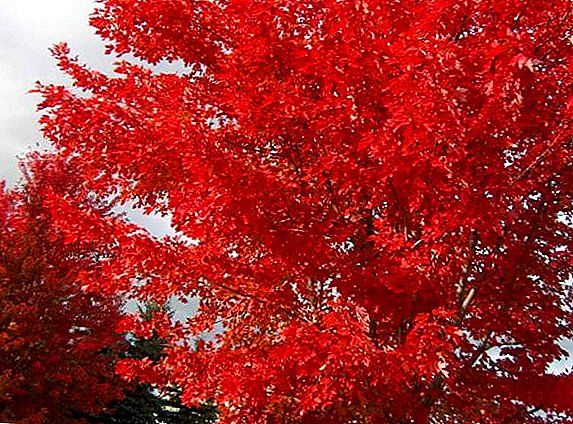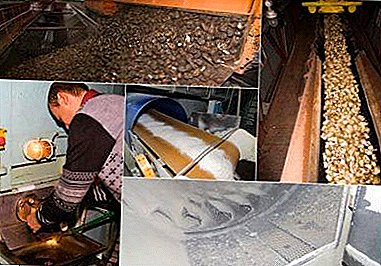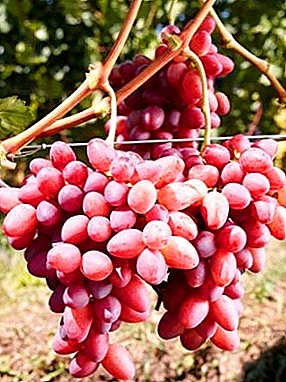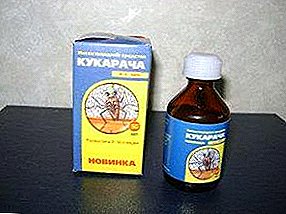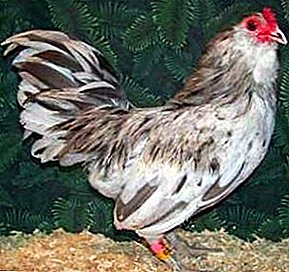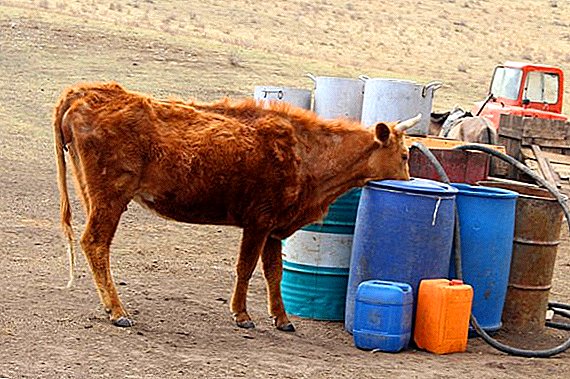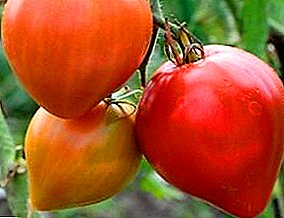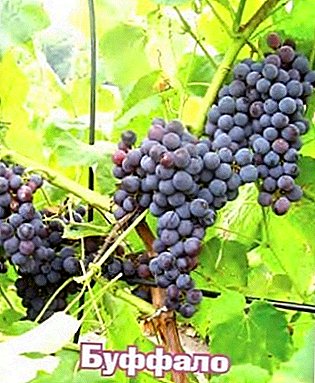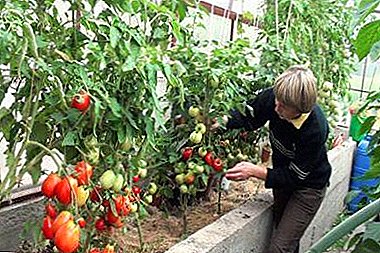
Many people think that growing tomatoes in a greenhouse is a simple matter. They are well protected from adverse weather conditions and drying of the soil.
But here, too, they may be subject to various diseases, and disturbed irrigation, temperature regime promotes the reproduction of pests and microbes.
Read further what troubles a farmer can expect when growing tomatoes indoors. What are the ways to combat diseases and pests.
Danger
Diseases of tomatoes and their characteristics can be varied, the main thing is to notice the main symptoms in time and use various means to combat them. If you let it go, it will lead to:
- yield reduction;
- damage to the fruit;
- death of tomatoes.
Fungal lesions, photos and methods for treating greenhouse tomatoes
The most common diseases caused by fungi. Their spores begin to wake up at high humidity, because it is not easy to avoid dampness in a greenhouse.
Anthracnose
Tomatoes become weak, shed all the leaves. On the ripened tomatoes appear small bright depressed spots, turning into dark ringlets. Tomatoes burst, ingested infection leads to rotting. Green fruit and soil are infected.
In order to prevent this from happening:
- time to destroy weeds;
- control soil and air humidity;
- regularly spray special solutions.

Late blight
At late blight, the lower leaves first turn yellow, dry and die. Then the fungus infects the fruit. They turn black, covered with small spots, increasing gradually. You can fight with garlic tincture, treatment with 10% solution of common salt or 1% Bordeaux liquid.

Fusarium
A fungus that develops when a disease is caused by:
- poor light;
- low ground moisture;
- high temperature.
Signs of Fusarium are:
- yellowing leaves;
- wilting cuttings and shoots;
- slower plant growth.
At the first symptoms, a diseased plant must be removed along with a clod of soil. For treatment use:
- "Fitosporin-M".
- "Phytocide".
- "Trichodermin".

Root rot
The cause of root rot is fungi that infect the fruit. A small brown spot appears at their base, the plant begins to wither, and the green tomatoes are still falling.
It is required to disinfect the soil with a solution of copper sulphate. To remove its top layer and add fresh. For processing it is necessary to use the tool "Barrier" and "Barrier".
Can not be fed with fresh manure.

Alternaria
It is also called dry spotting. The disease develops due to excessive watering and poor ventilation. Initially, there appear from 7 mm to 15 mm spots on the lower, then middle leaves and stem. On top of the spots formed a gray fluffy bloom. High humidity leads to their draining. The leaves begin to fall off. On tomatoes are formed dented with black bloom near the stem, round spots.
Before buying fungicides, you should carefully read the instructions.

Cladosporiosis
In cladosporia (brown olive blotch), the lower leaves are first affected, and yellow round spots are formed on their upper side. The lower surface is covered with brown velvety coating. As a result, the leaves gradually curl and dry.
If not treated, the disease affects the fruits that become dark in color, become soft, and then dry.
The reason lies in:
- watering with very cold water;
- dampness;
- sharp temperature differential.
We must fight with the help of such drugs as:
- "Barrier".
- "Barrier".
- Bordeaux mixture.

Gradual wilting of seedlings
The reason for the slow withering of plants can be soil infection with sclerotinia. In this case, there are white spots on the leaves, the stem becomes sluggish, the seedlings become discolored and do not develop. It is necessary to change or sanitize the soil.
Didimella can slowly destroy the plant, at which dented black spots and dots appear on the stalk. Fungi are found in infected leaves or seeds. Didimella must be controlled by spraying Bordeaux mixture.
In a short time, gray rot can destroy tomato seedlings, and infection by it occurs through diseased soil.
All bushes are subject to destruction.
It is necessary to adjust the humidity and temperature, and spray the fungicidal agent.

Mealy dew
Drip moisture causes powdery mildew. On the leaves formed a white flour patina. They become brittle, curl, dry and fall. Lack of treatment leads to the death of the bush. It is necessary to clean and process the soil. Apply chemicals to fight.

Description of virus infections with photos
Tomatoes, if planted with infected seeds, can become sick with viral diseases. Since there are no effective methods of struggle, you need to hold them in a 1% solution of manganese before planting. You also need to disinfect the soil - 2-3% of the same solution.
Aspermia
A shrub that suffers aspermia does not develop properly. In appearance it looks like corrugated paper. His coloring is randomly patterned. Few fruits, they are small.

Necrosis
Necrosis leads to:
- lack of light;
- abundant watering;
- excess nitrogen fertilizer.
The first signs are the appearance of small cracks of dark green color on the lower part of the stem, later on, sprouting of air roots is formed in them. Then the leaves wither, the plant falls and dies. Available fruits do not ripen.
The source of infection are diseased soil and seeds. Shrubs need to be destroyed, and the land is treated with a 0.2% solution of Fitolavin-300.

Mosaic
The danger of this disease is that there is no treatment, prevention is needed. The reason is the use of infected seeds and planting seedlings in diseased soil. The symptom of the mosaic is a patterned color in the form of dark and light green intensely increasing spots.
As soon as they appear, the bush should be torn out and disposed of, and this place should be treated with a special solution.
Bacterial
Often, tomato diseases in the greenhouse are provoked by bacteria. The culture is affected by the infection in a short time. There is no way to save the harvest.
Black spot
Bacterial black spot affects all aboveground parts. The appearance of tomatoes spoils. When the soil is infected, all the seedlings can die. Symptoms of this disease are convex 3 mm black dots with a watery edge. They gradually increase, begin to be pressed inside, and the edges are torn. Tomatoes under these stains rot.
To avoid bacterial diseases, it is necessary to use alternation; tomatoes can be planted in the same place in 2-3 years.

Crayfish
The first signs are visible after the formation of the fruit, the plant withers, the leaves and fruits are covered with spots. Affects the vascular system of the plant, which becomes dark. Causes of cancer - infected seed and bacteria.
The fight is to disinfect the seeds. The temperature in the greenhouse should be about 25 degrees, and the humidity is not higher than 60%.

Pests
Harm to tomatoes causes:
- Medvedka. It has a gray color. This 50 cm insect has pronounced digging paws and short elytra. She digs deep nests where she lays about 300 eggs. Get rid of help tincture of 150 grams of hot pepper and 10 ml of water, poured into a mink.
- Wireworm. These are yellow caterpillars with a length of 20 mm, which strike the root, penetrating into the stem. They need to be collected manually and sprayed with a special preparation.
- Scoop. So called moths. Their caterpillars of black and earthy gray eat up leaves and stems. You can fight them with infusion of garlic or burdock leaves.
- Whitefly. The yellowish whitefly completely covers the leaves, on which a black patina appears. They dry up and the plant dies. It is necessary to fight with the larvae. To do this, wash the leaves with soapy water. Not bad helps infusion of dandelions.
In order to preserve the harvest of tomatoes in the greenhouse, it is necessary to start the treatment of diseases in a timely manner, and it is best not to forget to engage in prevention. It is much easier to fight when fungi, bacteria or viruses just started to develop.


